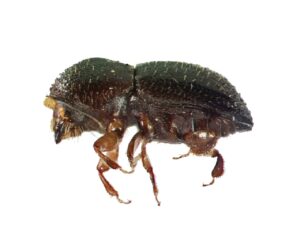[imagesource: Elizabeth Fischer]
The world is engaged in a battle against an “invisible enemy”, as many of the politicians who are failing miserably to protect their people like to call it, but for scientists at the Rocky Mountain Laboratories, that’s not exactly true.
Elizabeth Fischer’s work with the National Institute of Allergy and Infectious Diseases has seen her capture, and create, dramatic images of the dangerous pathogen.
She is one of the United States’ leading electron microscopists, and believes that by sharing images of the virus, scientists can “demystify” it so that it becomes more tangible.
Over to TIME:
“You often hear people call it the invisible enemy. It’s trying to put that face out there.” Working in one of the nation’s 13 “Biosafety Level 4” labs—those equipped to safely handle the most dangerous pathogens—Fischer and her team visualize the world’s deadliest plagues…
The breathtaking images allow people to see a virus as elaborate biological structures with weaknesses that can be exploited, yielding clues for researchers about how to develop treatments and vaccines…
Some of the more stunning images of the coronavirus—about 10,000 times smaller than the width of a human hair—have come from Fischer’s microscope.
That image right up top, with the orange folds and blue spheres, is one of Fischer’s. The blue spheres are the virus particles themselves, and the orange folds are protrusion on the surface of a primate’s kidney cell infected with SARS-CoV-2, the strain of coronavirus that causes COVID-19.
It’s important to note that electron microscopes produce black and white images, so Fischer enlists the help of visual artists who add colour to make it easier to differentiate between the virus and the host cells.
Here are two more of her images:


In this image, via the National Institute of Allergy and Infectious Diseases, the moment a swarm of new virions burst through the host’s cell wall, en route to infecting other cells, is captured:

You can see more of those photos here.
Of course, as we’re learning daily, being able to picture the virus as above doesn’t necessarily help us better understand many aspects of it.
The Western Cape infection ‘riddle’, for example, shows how much we still have to learn.





